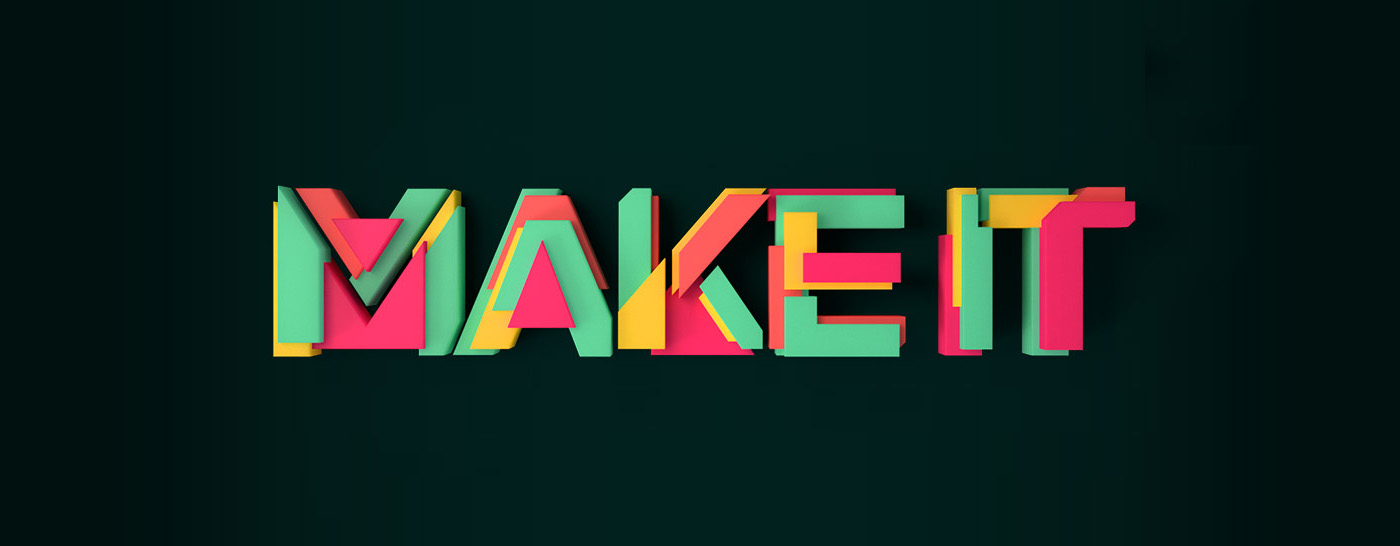I spent my Thursday blissfully binging on inspiration at Sydney’s beautiful new ICC, a kind of in-the-flesh ‘Netflix & Upskill’.
Adobe has expanded its product range and community massively over the past few years and its annual Asia Pacific ‘Make It’ conference has grown to match. This year featured an eclectic array of exhibits, workshops, speakers and demonstrations, great food and drink, and even a live musical/dance performance.
The vibrant festival of creativity reflects our gradual shift into what James Noble, founder of Carter Digital and awesome speaker, calls the Design Age. Already, we’re seeing that it’s no longer about the technology nor the information, both of which seem to be outpacing us all. Now there are few gatekeepers and few limits. The personal video recorder in your pocket is probably better than what professionals used in the 80s, and much smaller too. Technology is merely a conduit and our approach to projects should reflect this. We need to take the technology considerations away, design a solution to the problem and then add back in the technology required.
I attended ‘Adobe Make It’ as a graphic designer, but the attendees I met were from a range of professions — I even found an accountant! And why not? In the Design Age, creative problem-solving is becoming more important for all of us, because, let’s face it, when the friendly robots take our jobs, some of the only roles left for Homo sapiens will be the creative ones. But whether you’re a creative or not, I think some of the things I learnt at ‘Make It’ can be applied to your career. In the Design Age, we are all becoming creative problem-solvers with abstract, multi-directional-hyphenated titles on our business cards. So here’s what I wanted to share – and it’s all about passion, a running theme at this year’s conference.
It’s great to be passionate about what you’re working on, but Gareth O’Brien from animation agency Buck asserts that it has been an important business metric for his team. The difficulty lies in justifying so-called ‘passion projects’ for a busy individual or team, especially when there is business to be done and money to be made. But for Buck, 'passion projects' have been important in creating new revenue streams: Gareth notes that when you look at the agency’s work, there is often a clear line from passion project to similar paid client work immediately after. The underlying message: Make what you want to make more of and you will proactively define your career. And that’s not all. By pursuing a passion project, you can win design awards, learn, do something you believe in (like help a non-profit with a campaign), improve team culture, and have fun, too!
Watch the talks from the main stage speakers as well as the pre-conference Sessions on demand here.
Sounds good, doesn’t it? But how on earth are you going to fit passion projects into your already-packed calendar? Gareth offers some advice. The project needs not be something you just made up. You can use a real brief from a real client; the ‘passion’ part can be you going above and beyond to explore an exciting angle or add value beyond the budget. In fact, having the boundaries of a real brief can be creatively beneficial. And also, passion projects need not be huge undertakings: we can all think about ways to work on tiny side-projects every now and then.
Of course, the concept of passion projects is nothing new: many creatives have created careers by investing time in exploring, playing, and honing a style or a craft they’re naturally interested in. Two speakers were striking examples of this because of their niche specialties. Kitiya Palaskas ultimately made up a new job description for herself: she’s a ‘craft-based designer’ who makes designs out of felt, and piñata-esque props for various creative applications. Meanwhile, Timothy Goodman has recently become well-known for his illustration work using his preferred medium, the humble Sharpie. Both designers used passion projects to build a habit of constant practice and experimentation, and kept one eye open for opportunities to create unique income streams in their personal businesses. And both have published books to showcase their success: Piñata Party and Sharpie Art Workshop.
All the speakers at ‘Adobe Make It’ made the case for stoking your creative fire, not only because life is sweeter that way but also because creativity can make a difference to what your business looks like moving forward. So whether you’re a graphic designer or an accountant, whether you work on them in your personal or professional life, passion projects have a place — more so than ever as we enter the Design Age. I left ‘Make It’ with a recharged inspiration to, well, just make it. I’m going to brush the dust off my Wacom tablet and start making something, for fun and for profit. And I’d encourage you to do the same. Not sure where to start? Just pick a place — any place — and go from there. To quote Tim Goodman: “You gotta make a lot of stuff before you start making stuff like yourself.”


